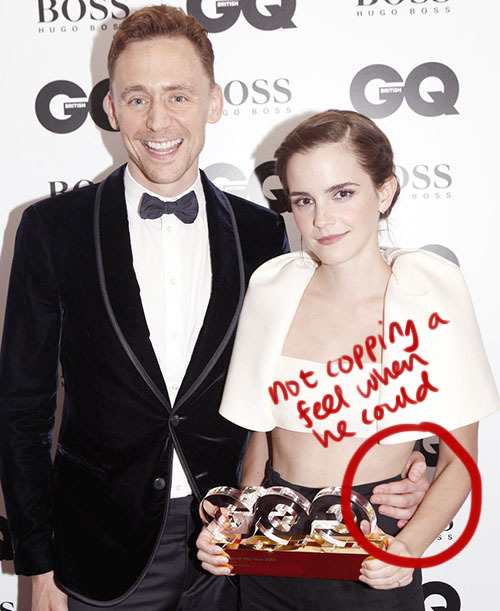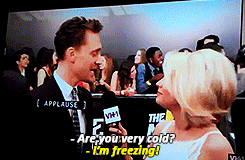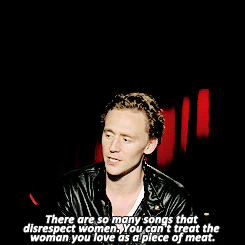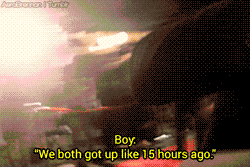Delightfulskywalker - 🥀

More Posts from Delightfulskywalker and Others









red carpet (2018)
Characteristics of the moons of Saturn
Saturn has 62 natural satellites. Here are some features of some of its moons, with mountains, valleys, and striking marks on their surfaces, often marked by asteroid bombardments causing small, huge craters.

Iapetus - Equatorial ridge
Iapetus’s equatorial ridge was discovered when the Cassini spacecraft imaged Iapetus on 31 December 2004. Peaks in the ridge rise more than 20 km above the surrounding plains, making them some of the tallest mountains in the Solar System. The ridge forms a complex system including isolated peaks, segments of more than 200 km and sections with three near parallel ridges.

Tethys - Odysseus crater
Odysseus is the largest crater on Saturn’s moon Tethys. It is 445 km across, more than 2/5 of the moon’s diameter, and is one of the largest craters in the Solar System.

Tethys - Ithaca Chasma
Ithaca Chasma is a valley (graben) on Saturn’s moon Tethys, named after the island of Ithaca, in Greece. It is up to 100 km wide, 3 to 5 km deep and 2,000 km long, running approximately three-quarters of the way around Tethys’ circumference, making it one of the longer valleys in the Solar System. Ithaca Chasma is approximately concentric with Odysseus crater.

Tethys - Red arcs
Unusual arc-shaped, reddish streaks cut across the surface of Saturn’s ice-rich moon Tethys in this enhanced-color mosaic. The red streaks are narrow, curved lines on the moon’s surface, only a few miles (or kilometers) wide but several hundred miles (or kilometers) long.

Rhea - Inktomi crater
Inktomi, also known as The Splat, is a prominent rayed impact crater 47.2 kilometres (29.3 mi) in diameter located in the southern hemisphere of Saturn’s moon Rhea.

Mimas - Herschel Crater
Herschel is a huge crater in the leading hemisphere of the Saturnian moon Mimas, on the equator at 100° longitude. It is so large that astronomers have expressed surprise that Mimas was not shattered by the impact that caused it. It measures 139 kilometres (86 miles) across, almost one third the diameter of Mimas. If there were a crater of an equivalent scale on Earth it would be over 4,000 km (2,500 mi) in diameter – wider than Canada – with walls over 200 km (120 mi) high.

Enceladus - Surface with fractures
Close up of one of the ‘tiger stripes” or fissures called Baghdad Sulcus. Both heat and occasional geysers issue from this formidable crack. Some of the material coating the landscape may be snow condensed from vapor. This closeup of the surface of Enceladus on November 21, 2009, viewed from approximately 1,260 miles (2,028 kilometers) away.

Dione - Contrasts
This image from NASA’s Cassini spacecraft shows a part of Dione’s surface that is covered by linear, curving features, called chasmata. One possibility is that this stress pattern may be related to Dione’s orbital evolution and the effect of tidal stresses over time. This view looks toward the trailing hemisphere of Dione.
Learn more: Iapetus, Tethys, Rhea, Mimas, Enceladus and Dione.
Images: NASA/JPL-Caltech
Had to post this somewhere.
I’ve been thinking about Elon Musk’s Tesla.
The guy shot a car into space. A freaking car. With a fake astronaut in the seat and the words “Don’t Panic.”
And people are seeing this as this bizarre conspicuous consumption or a weird Tesla publicity stunt. As a one percenter…
…but the more I think about it, the more I realize something quite simple.
This guy had to launch a test load. He had to put something on that rocket. Given the power of the rocket, whatever they launched as a test load had to be heavy enough to properly test the biggest rocket we’ve launched since the Apollo program.
It had to be well built and solid enough to survive the launch. Now, because of the size of the load, it had to be put into a stable orbit not, as happens with smaller test loads, set to burn up in the Earth’s atmosphere.
So, assuming everything went well, whatever they put on that rocket? It’s going to be in space for a long time. Assuming it’s not hit by a bit of debris, or an asteroid, or whatever, it could be up there for millions of years. It’s in space, so it’s not going to rust or corrode. It will eventually develop pitting from micro meteor strikes, it’s not going to last forever.
So, what does the guy send up.
A freaking car with an astronaut in the seat and the words “Don’t Panic” printed on it.
It’s corny. It’s tacky. But what else is it?
It’s art.
It’s something that’s going to still be recognizable as art in a few thousand years. After we’re all dead. Heck, it may still be recognizable as art after our species is dead - extinct or evolved into something else.
Given the fact that he had to put some kind of object into a stable orbit in the solar system, Musk picked not just art, but ridiculous art. The kind of thing that hangs from diner ceilings, the kind of thing a kid would put together.
He put something out there that screams to the void “This is us. This is humanity. This is how utterly silly we are, how completely frivolous.”
And you know what, if the first..or the only…thing an alien civilization sees of us is Elon Musk’s stupid car, I’m quite happy with that.
They might not be able to decipher the message, but they’ll know somebody was here who, given the power to fly into space used it to play.
I’m quite happy with that.
Hi, I need a little help. I'm 16 and few months ago started being interested in astronomy. I haven't made a big progress since then, because I don't know where to start. I'm quite good at maths, not so "strong" at physics, but I don't have lot of problems with this subject. What and where should I learn at first? (I started "brief history of time", found "crash course" and csuDH course, but didn't start them). My knowledge of astronomy is very very low, so I'd be thankful for your advice!
Hello!16 is a perfect time to start thinking about options in astronomy. Actually that was approximately the time I started to realize that astronomy/astrophysics is something I want to do in the future. :)

PLAN YOUR FUTURE!
First of all - congratulation! You´ve already started! :) You need to have an idea about what would you like to do in the future. If it is an astronomy field - excelent! Now, next step is to know your options - I don´t know where are you from, but I guess there is a university nearby which is offering a study of astrophysics. Mostly studying astrophysics at university requires GCSE or graduation in mathematics and physics and good school results - but you need to find out by yourself, because every educational system is quite different and I don´t know how it goes in your country.After you choose a university you want to study in, you should do next step which is realizing what are your options after you´ll finish university. I recommend you this website —> here <— you can read something about how to plan your education in astronomy/astrophysics and some tips. —> here <— is a website where many astronomers/astrophysicists are looking for jobs. Also you can check this site —> here<— where you can find another list of jobs in this field.
(I´ve answered similar questions not long time ago, so you should check it out >> here << and >> here << )
GET INTO IT!
The fun way to learn something about a field of astronomy is to check out astronomy websites…These are my favourite:~ NASA ~ Space.com~ ESO~ CERN~ New Scientist~ Physics-AstronomyIf you prefer something more personal, try these books:(These are not hard to understand and they will help you in the beginning)~ The Fabric of the Cosmos: Space, Time, and the Texture of Reality ~ The Elegant Universe: Superstrings, Hidden Dimensions, and the Quest for the Ultimate Theory~ The Book of Constellations: Discover the Secrets in the Stars~ The Physics Book: From the Big Bang to Quantum Resurrection, 250 Milestones in the History of Physics (Sterling Milestones) ~ Pale Blue Dot: A Vision of the Human Future in Space~ Cosmos~ NightWatch: A Practical Guide to Viewing the Universe
If you don´t have energy or if you are not in the mood for reading, try these documentaries:~ How the Universe Works~The Universe (TV series)~ Known Universe~ Cosmos: A Spacetime Odyssey~ The Age of Hubble~ The Year of PlutoI also derive benefit from youtube videos…you can find many documentaries there and also many astonishing animations, tutorials and even whole lectures which can help you with better understanding math/physics/astronomy problems.~ Astronomy lectures~ Physics lectures~ Math lectures~ Astronomy animations~ Astronomy documentaries~ Physics documentaries

SOME CONCLUSION
It is important to know your options. Another important thing is to make contacts with people who know things you do not know yet. The next step is to choose what you want to achieve in the future and ensure a procedure which will get you there. Self-education is necessary :)
Don´t worry, you will get there, but it takes time and work!
With love @astrophysicsstudent <3







It’s Bigger Than Us, David Schermann
Vienna-based artist and photographer David Schermann explores concepts of existence, space, and love in his ongoing series It’s Bigger Than Us.
Instagram.com/WeTheUrban
Keep reading
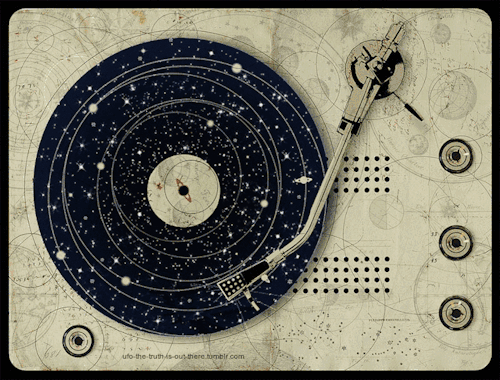


-
 harmonizeorelse liked this · 1 year ago
harmonizeorelse liked this · 1 year ago -
 monikabose liked this · 1 year ago
monikabose liked this · 1 year ago -
 stargazingsnail liked this · 2 years ago
stargazingsnail liked this · 2 years ago -
 ultrajeune reblogged this · 2 years ago
ultrajeune reblogged this · 2 years ago -
 western-goth reblogged this · 2 years ago
western-goth reblogged this · 2 years ago -
 vincentblackwood liked this · 2 years ago
vincentblackwood liked this · 2 years ago -
 ohh-c0mely reblogged this · 2 years ago
ohh-c0mely reblogged this · 2 years ago -
 sleepdeprivedpisces liked this · 2 years ago
sleepdeprivedpisces liked this · 2 years ago -
 dark-night-of-the-clownfish reblogged this · 2 years ago
dark-night-of-the-clownfish reblogged this · 2 years ago -
 alferaz reblogged this · 2 years ago
alferaz reblogged this · 2 years ago -
 alferaz liked this · 2 years ago
alferaz liked this · 2 years ago -
 cosmicwand3r3r reblogged this · 3 years ago
cosmicwand3r3r reblogged this · 3 years ago -
 stonedprincezz reblogged this · 3 years ago
stonedprincezz reblogged this · 3 years ago -
 dontdodrugskiids reblogged this · 3 years ago
dontdodrugskiids reblogged this · 3 years ago -
 atreyusnothingness5 reblogged this · 3 years ago
atreyusnothingness5 reblogged this · 3 years ago -
 atreyusnothingness5 liked this · 3 years ago
atreyusnothingness5 liked this · 3 years ago -
 dark-night-of-the-clownfish reblogged this · 3 years ago
dark-night-of-the-clownfish reblogged this · 3 years ago -
 yamil4 reblogged this · 3 years ago
yamil4 reblogged this · 3 years ago -
 cosmicwand3r3r reblogged this · 3 years ago
cosmicwand3r3r reblogged this · 3 years ago -
 noumbissi7 reblogged this · 3 years ago
noumbissi7 reblogged this · 3 years ago -
 noumbissi7 liked this · 3 years ago
noumbissi7 liked this · 3 years ago -
 heavenorhell77 reblogged this · 4 years ago
heavenorhell77 reblogged this · 4 years ago -
 hayleynoelll reblogged this · 4 years ago
hayleynoelll reblogged this · 4 years ago -
 foreveryoungwild reblogged this · 4 years ago
foreveryoungwild reblogged this · 4 years ago -
 foreveryoungwild liked this · 4 years ago
foreveryoungwild liked this · 4 years ago -
 strawberrypussymilk reblogged this · 4 years ago
strawberrypussymilk reblogged this · 4 years ago -
 strawberrypussymilk liked this · 4 years ago
strawberrypussymilk liked this · 4 years ago -
 bronzeandnoble reblogged this · 4 years ago
bronzeandnoble reblogged this · 4 years ago -
 espace-gris reblogged this · 4 years ago
espace-gris reblogged this · 4 years ago -
 trickycactus reblogged this · 4 years ago
trickycactus reblogged this · 4 years ago -
 wodnikszuwarek liked this · 4 years ago
wodnikszuwarek liked this · 4 years ago -
 leviathanlazarus reblogged this · 4 years ago
leviathanlazarus reblogged this · 4 years ago -
 virginxveins reblogged this · 4 years ago
virginxveins reblogged this · 4 years ago -
 fuckingcroissants reblogged this · 4 years ago
fuckingcroissants reblogged this · 4 years ago -
 virginxveins liked this · 4 years ago
virginxveins liked this · 4 years ago -
 stfuuuuuuuuuck liked this · 4 years ago
stfuuuuuuuuuck liked this · 4 years ago -
 secretlycrispytaco liked this · 5 years ago
secretlycrispytaco liked this · 5 years ago -
 yourlocalbitchh liked this · 5 years ago
yourlocalbitchh liked this · 5 years ago
"Hope is like the sun. If you only believe it when you see it, you'll never make it through the night." -Princess Leia
286 posts












